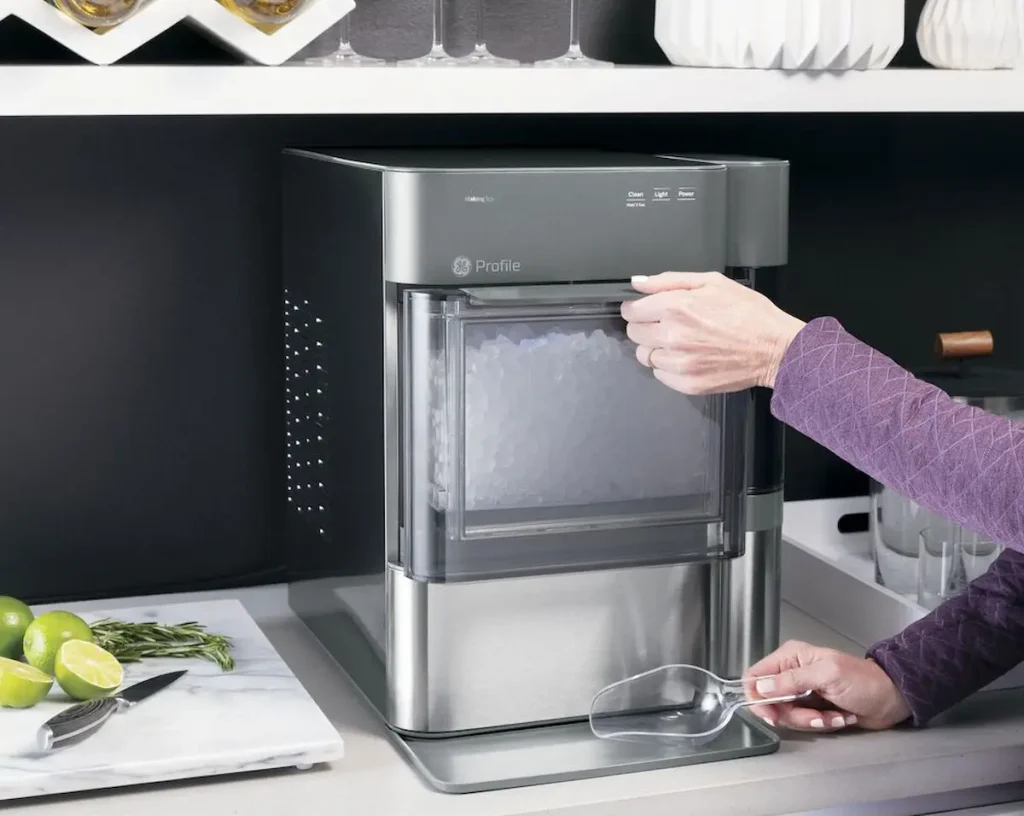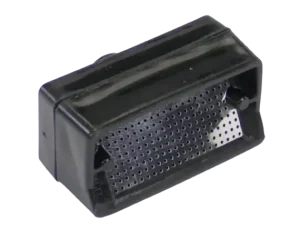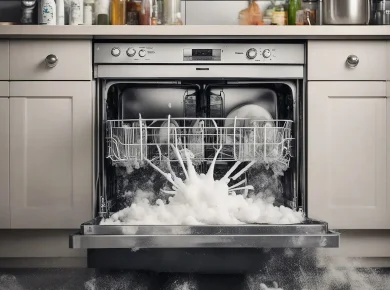
Nothing beats the convenience of fresh nugget ice at your fingertips, especially during the hot summer days. And while the GE Profile ice maker does a great job at producing ice, it also requires quite a bit of maintenance.
GE recommends that you clean your ice maker once a week and descale it every 3 weeks. If you use distilled water to fill the reservoir, you only need to clean it once a month and descale it every 4 months, saving you a significant amount of time and hassle.
This is why I recommend using distilled water if possible. You can buy a gallon for under $2 at Amazon or pick some up at your local grocery store. And with a little patience, you can even make your own distilled water for free at home.
Good to know:
A gallon of distilled water will fill the reservoir approximately three times.
Of course, even with distilled water, you will still need to clean your ice maker from time to time.
This article will cover the entire process, as well as some handy tips to keep your ice maker working smoothly for years to come.
How To Clean GE Profile Ice Maker
You should set aside approximately 15 minutes to clean your ice maker.
Step 1: Unplug the ice maker and wait 1 hour
Begin by unplugging your opal ice maker and let it sit for 1 hour. This is important because it disables the UV light inside the unit and gives it time
Step 2: Replace water filter with screened intake cap
It’s a good idea to use a water filter with your opal ice maker, but you will need to remove it for cleaning. Replace it with the reservoirs screened intake cap that came with your unit.

Step 3: Drain the ice maker
Move your ice maker close to a sink or bucket, then drain it by following these steps:
- Pull up on the drain hoses at the back of the unit to detach them.
- Lower the hoses into a sink or bucket so that the water can run down and out of the unit.
- Remove the plugs at the ends of the hoses to begin draining and wait until no more water is flowing.
- Re-insert the drain plugs.
Keep in mind that it’s important that the sink or bucket be positioned below the level of the ice maker so that all of the water can drain out.
Step 4: Plug your ice maker back in and switch to Cleaning mode
Without moving the unit away from the sink or bucket, plug your ice maker back into an outlet. Next, switch the toggle on the back of the unit to “Cleaning”. You should see the display ring turn yellow and begin to pulse.
Step 5: Add the cleaning solution
Next, you will need to fill the reservoir with a bleach-based cleaning solution. Add five cups of water and one teaspoon of household bleach to the reservoir.
Step 6: Tap the display button to start cleaning
Touch the round button on the front of the unit to begin the cleaning process. Water will begin to circulate and the yellow light should start to spin. Wait three minutes until the light stops spinning and starts to pulse.
Step 7: Drain the ice maker again
Detach the drain hoses and lower them into your sink or bucket, then remove the plugs and allow it to drain fully. Once the water stops flowing, replace the plugs and re-attach the drain hoses to the unit, then move on to the next step.
Step 8: Rinse with fresh water
Finally, you will want to rinse out your ice maker at least three times with fresh water in order to remove any leftover bleach and mineral deposits that have been loosened. Follow these steps, repeating as often as you want:
- Fill the reservoir with five cups of fresh water and tap the button on the front of the unit.
- Wait until the water stops running (about 3 minutes), then drain it and re-attach the hoses.
- Run at least three full rinse cycles through your ice maker in order to clear out any lingering bleach taste or smell.
Step 9: Switch back to Ice mode
Refill the reservoir one more time with distilled or fresh water for ice, then flip the switch on the back of the unit to Ice mode again.
How To Troubleshoot GE Profile Ice Maker
Regularly cleaning your ice maker is the best way to keep it working smoothly year after year. However, even with consistent cleaning, it’s possible to run into issues.
Fortunately I have an entire article dedicated to troubleshooting your GE Profile ice maker, with lots of tips and fixes that you can try.

